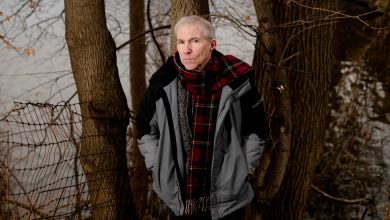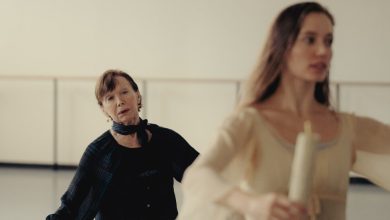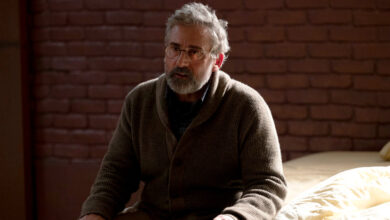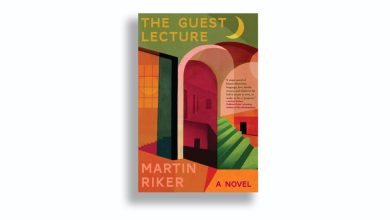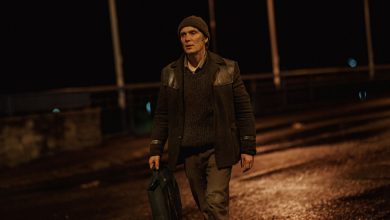What’s It Like to Work With Hayao Miyazaki? Go Behind the Scenes.
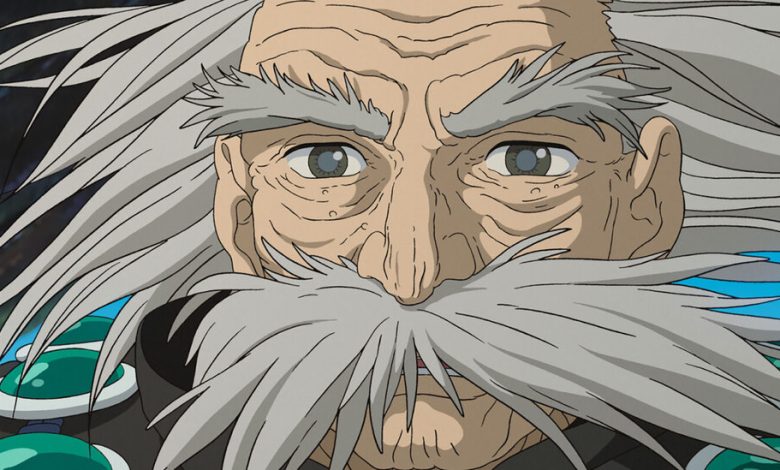
News of Hayao Miyazaki’s retirement can’t ever be trusted.
The Japanese animation master’s repeated claims that he’ll give up filmmaking are a response to the strain that creating each of his largely hand-drawn universes entails. At least that’s what Toshio Suzuki, a founder of Studio Ghibli and Miyazaki’s right-hand man for the past 40 years, believes.
“Every time he finishes a film, he’s so exhausted he can’t think about the next project,” Suzuki explained. “He’s used up his energy physically and mentally. He needs some time to clear his mind. And to have a blank canvas to come up with new ideas.”
A decade after 2013’s “The Wind Rises” was heralded as Miyazaki’s final film, the 82-year-old auteur’s newest feature, “The Boy and the Heron,” is being released in the United States after major success in Japan over the summer, where it opened without any traditional publicity.
Though the director hasn’t given any interviews about “The Boy and the Heron,” Suzuki, 75, who is also a veteran producer, and Joe Hisaishi, 72, the longtime composer on Miyazaki’s movies, described in separate video interviews the master’s working process and how their collaborations have evolved — or not — over the years.
Suzuki was casually dressed and speaking, via an interpreter, from Japan, where he sat next to a pillow emblazoned with Totoro, the bearlike troll that serves as the studio’s logo. He said the new fantasy film is Miyazaki’s most personal yet. Set in the final days of World War II, the tale follows 11-year-old Mahito, who, after losing his mother in a fire, moves to the countryside, where a magical realm beckons him.
“At the start of this project, Miyazaki came to me and asked me, ‘This is going to be about my story, is that going to be O.K.?’ I just nodded,” Suzuki recalled with the matter-of-factness of someone who’s learned it would be futile to stand in the way of the director.
For a long time, he said, Miyazaki worried that if he made a movie about a young male, inspiration would inevitably be drawn from his own childhood, which he felt might not make for an interesting narrative. Growing up, Miyazaki had trouble communicating with people and expressed himself instead by drawing pictures.
“I noticed that with this film, where he portrayed himself as a protagonist, he included a lot of humorous moments in order to cover up that the boy, based on himself, is very sensitive and pessimistic,” Suzuki said. “That was interesting to see.”
If Miyazaki is the boy, Suzuki added, then he himself is the heron, a mischievous flying entity in the story that pushes the young hero to keep going. The director Isao Takahata, Studio Ghibli’s third foundational musketeer, who died in 2018, is represented onscreen by Granduncle, a wise but weathered figure who controls the fantastical world Mahito ventures into.
Suzuki first met Miyazaki in the late 1970s, when the animator was making his first feature, “Lupin III: The Castle of Cagliostro,” an amusing caper. Back then, Suzuki was a journalist hoping to interview him.
But Miyazaki, who was working on a storyboard, had no interest in talking and ignored him. “Out of kindness, I thought it was a good thing to introduce his works to my readers, and for him to be very cranky and disrespectful, I was very angry,” Suzuki remembered.
He stuck around the studio for two more days of silence. On the third, Miyazaki asked him if he knew a term for a car overtaking another during a chase. Suzuki’s reply, a specific Japanese expression for such action, finally broke the ice and kick-started their long-term relationship.
“Miyazaki still remembers that first meeting, too,” Suzuki said. “He thought that I was a person not to be trusted. And that’s why he was very cautious about talking to me.”
Over the years, Suzuki has become increasingly indispensable for Miyazaki. “He always tells me, ‘Suzuki-san, can you remember the important things for me?’ And then he feels that he can forget about all the important things not concerning his films. I have to remember them for him,” Suzuki said.
Best friends more than mere collaborators, Miyazaki and Suzuki talk every day, even if there’s nothing urgent to discuss, and make it a rule to meet in person on Mondays and Thursdays. “What we talk about is very trivial most times, I guess he feels lonely or misses me, but it’s always him who calls me. I never call him,” Suzuki said, adding with a laugh, “Sometimes he even calls me in the middle of the night, like at 3 a.m., and the first thing he says is, ‘Were you awake?’ And obviously I was not. I’m in bed!”
In contrast, Hisaishi, the composer who first worked with Miyazaki on the 1984 feature “Nausicaa of the Valley of the Wind,” has a strictly professional relationship with him.
“We don’t see each other in private,” Hisaishi, wearing an elegant sweater, said through a translator. “We don’t eat together. We don’t drink together. We only meet to discuss things for work.” That emotional distance, he added, is what has made their partnership over 11 films so creatively fruitful.
“People think that if you really know a person’s full character then you can have a good working relationship, but that doesn’t necessarily hold true,” Hisaishi said. “What is most important to me is to compose music. The most important thing in life to Mr. Miyazaki is to draw pictures. We are both focused on those most important things in our lives.”
On “The Boy and the Heron,” Miyazaki didn’t provide Hisaishi with any instruction. The musician watched the film only when it was nearly completed but still with no sound or dialogue. At that point Miyazaki simply said to Hisaishi, “I just leave it up to you.”
“I feel he was just thinking that he could rely on me and expected me to come up with something,” Hisaishi said. “I feel like I was very much trusted to do this.”
For all of their previous collaborations, Miyazaki would bring on Hisaishi to discuss once three out of the four or five parts of the storyboard for a new film were ready. That the process changed this time was possible only because of their shared history.
“It’s as if we’ve been Olympic athletes making a film once every four years for 40 years,” Hisaishi said. “It’s been a long time of training and performing. When I look back I’m amazed that I could write music for these very different films.”
In his contemporary classical work, Hisaishi had been working on minimalist compositions with repeating patterns, and he took that approach to the new film.
While he maintains they are just colleagues, every January for the past 15 years, Hisaishi has composed a small tune, recorded it on a piano and sent it to Miyazaki as a birthday present. This tradition has now become the seasoned musician’s lucky charm.
“After about three times I thought, ‘This has probably run its course,’” Hisaishi recalled. “I didn’t send one the following year. That whole year I wasn’t able to work very well. It was sort of a jinx that I had not sent him something, so I started sending him the music again for his birthday,” he added with a laugh.
Both Hisaishi and Suzuki say their interactions with Miyazaki have not changed much over the decades. On the contrary, the men have become staunch creatures of habit.
Asked why his profound connection with Miyazaki has endured so long, Suzuki said: “I don’t necessarily agree, but he once told me, ‘I’ve never met someone so similar to me. You are the last person that I will meet like that.’”
